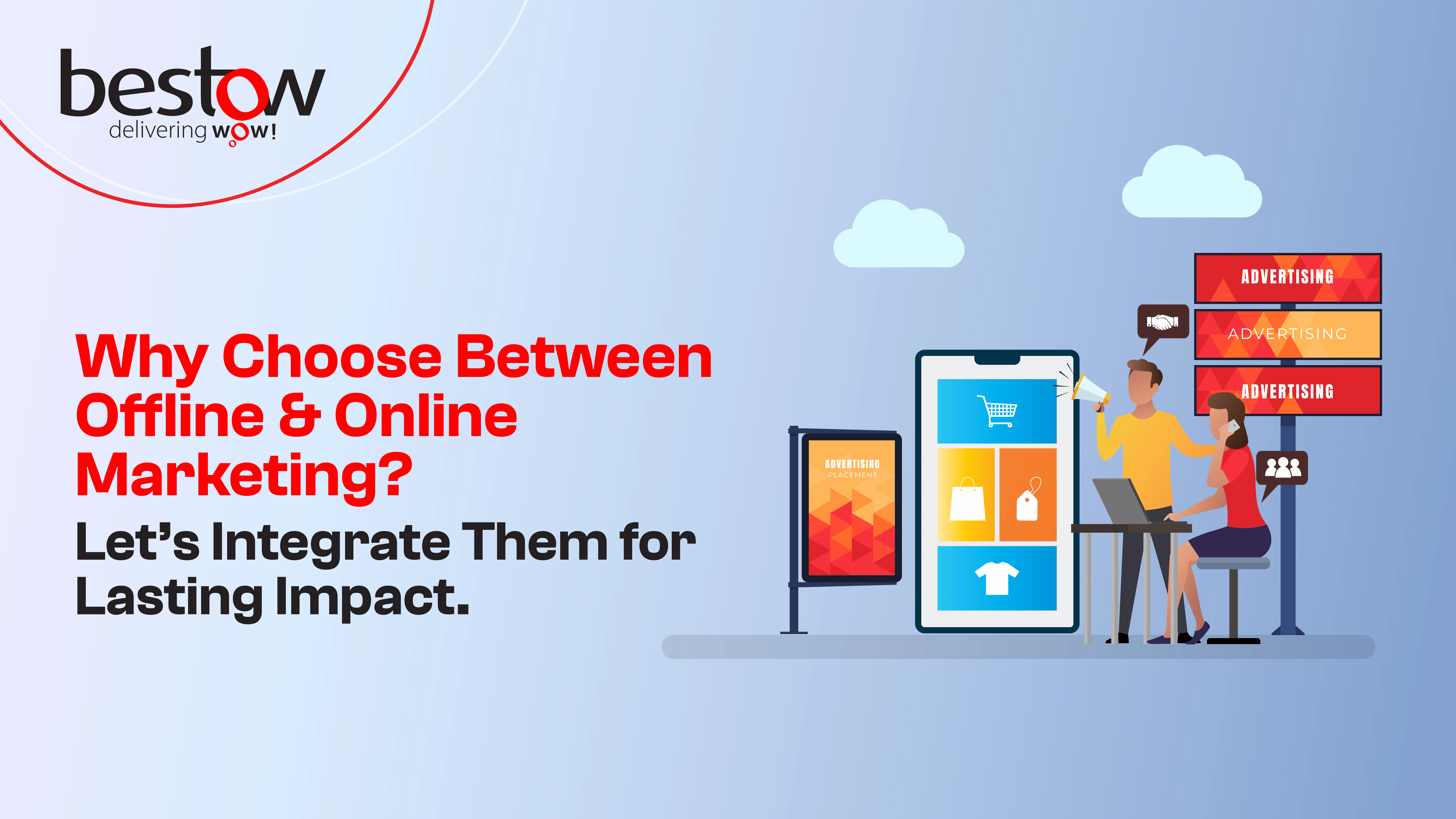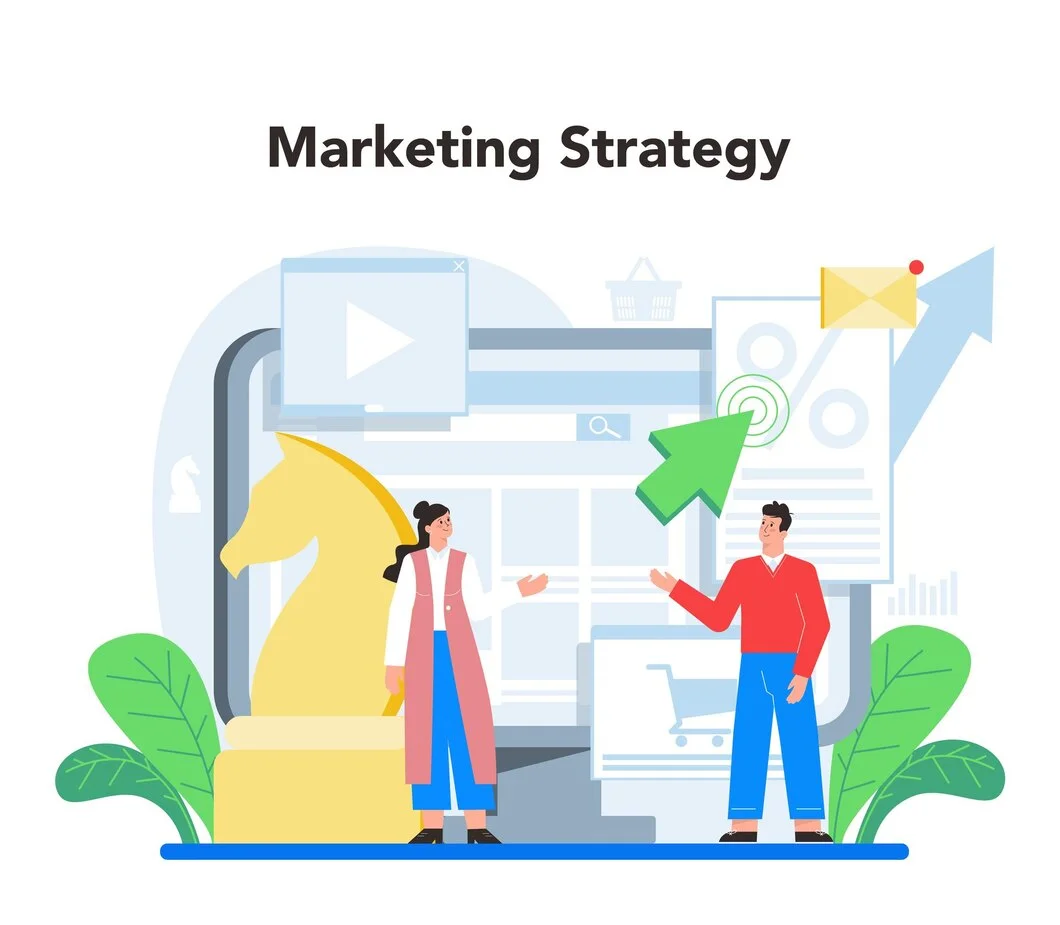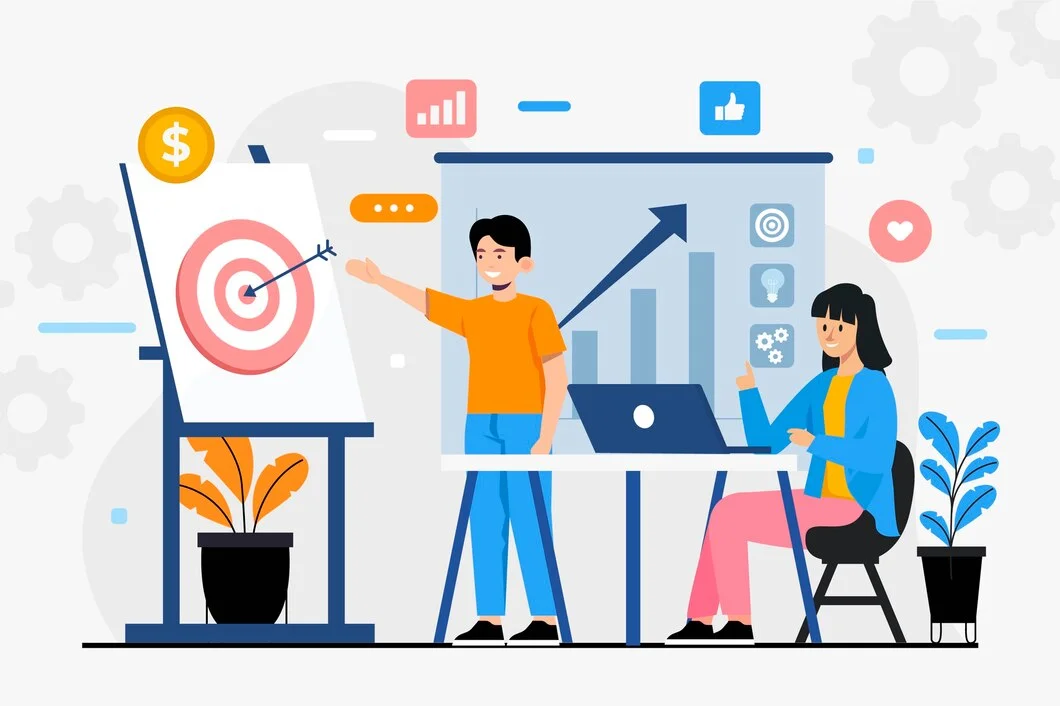Hybrid Marketing: Combining Offline and Online Strategies for Maximum Impact

29/10/2025
Start Listening
Hybrid Marketing: Combining Offline and Online Strategies for Maximum Impact
In 2025, the line between offline and online marketing isn’t just blurring, it’s merging. From billboard QR codes to influencer pop-ups in Ahmedabad malls, brands increasingly see that the future is hybrid. According to CleverTap, 66% of customers expect personalised messaging across each channel, and 76% expect brands to understand their unique needs on every touchpoint.
Hybrid marketing bridges this gap, weaving the trust of traditional media with the precision and scale of digital channels. It’s not digital versus physical; it’s about integration, synergy, and storytelling across every customer journey.

The Power of Hybrid Marketing
Hybrid marketing isn’t a buzzword; it’s a shift in mindset. It’s about syncing your physical and digital presence to tell one continuous story. Offline and online marketing integration works best when every interaction from a hoarding to an Instagram reel feels like part of the same brand experience.
For example, a Gujarati jewellery brand might showcase its festive collection through local exhibitions (offline) and live Instagram sessions (online), ensuring customers experience the sparkle both ways.
At Bestow, we craft hybrid marketing strategies that connect every touchpoint—online or offline—into one seamless brand story.
Contact us today
Why the Hybrid Model Works in India?
In India, shopping is still personal. People want to touch, feel, and talk, but they also scroll, compare, and review. Cities like Surat and Vadodara thrive on community-driven trust. A hybrid channel marketing strategy allows brands to connect emotionally offline and nurture that bond digitally. Whether it’s a traditional textile business running WhatsApp broadcast deals or an FMCG brand promoting local fairs on Meta ads, hybrid models sustain engagement beyond transactions.
Building an Effective Hybrid Marketing Strategy
Building a hybrid marketing strategy isn’t about choosing between traditional and creative marketing strategies; it’s about blending their strengths. In a market where customers discover your brand online but make purchase decisions offline, balance is everything. The most successful 2025 campaigns didn’t just coexist across channels; they connected them to create seamless, memorable experiences.
1. Combine Traditional and Digital Marketing for Synergy
Don’t think of print and digital as rivals; think of them as allies. A TV ad followed by a YouTube retargeting campaign ensures recall, while print QR codes bridge offline curiosity to online action.

2. Use Cross-Channel Marketing for Seamless Experiences
Cross-channel marketing thrives on consistency. From in-store posters to email newsletters, your tone, design, and message must feel like one continuous dialogue, something brands are learning through integrated brand personality.
3. Leverage Events and Social Media Together
Hosting a workshop in Ahmedabad or a pop-up in Baroda? Pair it with real-time Instagram coverage or a LinkedIn feature. It not only extends reach but also creates a digital memory of an offline experience.
4. Data + Emotion = Hybrid Success
Offline offers emotion, digital adds precision. A successful hybrid marketing strategy blends customer insights (from surveys or store visits) with online metrics to better target and re-engage customers.
Hybrid Campaigns That Work
Imagine a Diwali campaign where customers receive an exclusive in-store coupon via an email campaign, a perfect case of offline and online marketing integration.
Or a restaurant that places QR-based feedback forms on tables, instantly connecting diners to its loyalty app. These are not some futuristic ideas but game-changing marketing trends that businesses are adopting across Gujarat for smarter integrated marketing communications.
Challenges and How to Overcome Them
Hybrid marketing sounds seamless on paper, but the real world isn’t always so coordinated. Many brands struggle to synchronise their offline and online efforts, measure their impact effectively, or maintain a consistent message across all touchpoints. Let’s look at three common challenges and how you can overcome them.

1. Disconnected Teams and Messaging
When offline and online teams work in silos, campaigns lose their unified voice. A customer might see one narrative on a billboard and another on Instagram, breaking trust and reducing engagement.
How to overcome: Create an integrated marketing calendar and shared content guidelines. Hold regular sync meetings between digital, PR, and sales teams to ensure every campaign speaks the same brand language.
2. Tracking and Measuring Cross-Channel Performance
It’s easy to measure clicks or impressions online, but how do you quantify the impact of a print ad or event on digital conversions? This data gap often weakens the strategy.
How to overcome: The solution lies in integration using tools like QR codes, unique URLs, and unified dashboards to connect offline interactions with digital analytics. This way, brands can see the full customer journey instead of fragmented snapshots.
3. Inconsistent Customer Experience Across Touchpoints
Customers expect smooth transitions between online discovery and offline purchase, but many brands fail to deliver that continuity.
How to overcome: Build omnichannel workflows that merge CRM data, social engagement, and in-store behaviour. Train sales and digital teams to view customer journeys holistically, ensuring every platform feels like part of the same conversation.
The Future of Hybrid Marketing
As AI-driven personalisation meets human-led storytelling, the next frontier of marketing lies in harmony, not hierarchy. Campaigns will feel more phygital, blending immersive offline experiences with digital intelligence. The brands that thrive in 2026 will be those that combine emotion with automation and storytelling with strategy.
Partner With Bestow And Become Visible
At Bestow, we help brands craft seamless hybrid journeys where a digital click complements an offline connection. Whether you need strategic social media marketing, bold brand identity development, or a customised campaign that blends both worlds, our team builds experiences that stay memorable long after the sale.
Let’s co-create your hybrid brand story. Connect with us today!
FAQs
Hybrid marketing is a strategy that blends offline and online marketing channels to create a seamless customer experience. It allows brands to connect emotionally through physical touchpoints while maintaining the reach and data-driven precision of digital platforms.
Brands integrate both by linking print, events, or in-store campaigns with digital tools like QR codes, social media, and personalised email follow-ups. The goal is to ensure every offline interaction leads audiences back into the online ecosystem.
It maximises visibility, builds stronger customer relationships, and creates multiple engagement touchpoints. Most importantly, it bridges the trust gap between traditional and digital audiences.
Consumers move fluidly between online and offline spaces, and brands that don’t adapt risk losing visibility. Hybrid marketing ensures a consistent brand presence wherever your audience interacts.
Examples include brands hosting offline events promoted through digital campaigns, or retailers using influencer collaborations to drive foot traffic. Even something as simple as a billboard with a QR code linking to an online offer counts as hybrid marketing.
Local businesses can combine WhatsApp marketing, community events, and social media promotions to reach both local and digital audiences. Affordable digital tools make it easy to track engagement from offline efforts too.
Hybrid marketing focuses on combining offline and online efforts strategically, while omnichannel marketing aims for a unified, consistent customer experience across all channels. In short, hybrid is the mix; omnichannel is the harmony.
ROI can be tracked by linking online metrics like website visits or conversions to offline triggers like event attendance or coupon redemptions. Unified analytics tools make it easier to attribute success across both spaces.
Offline ads spark curiosity and brand recall, encouraging audiences to look up the brand online. When supported by a strong digital presence, they drive significant increases in website traffic and social interactions.
Some of the best examples include brands that integrate festive in-store experiences with digital storytelling or influencer-driven local promotions. Campaigns that blend emotional offline connections with measurable online actions tend to perform best.
Categories
Recent Blogs
Send us a message
We'd love to hear from you
Let's build a plateform that works for you busines and the advertisers who trust it.
Talk to Our Expert